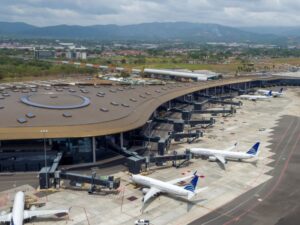Source: WTTC
A new study by the World Travel & Tourism Council (WTTC) has revealed the recovery of Italy’s Travel & Tourism could be jeopardised if quarter of a million jobs across the sector remain unfilled.
The research analysed labour shortages across Italy and other major Travel & Tourism destinations, such as the U.S., France, Spain, the UK, and Portugal.
The data shows Italy is the most impacted of the European countries analysed, expected to see a shortfall of a shocking 250,000 workers, with one in six vacancies likely to remain unfilled this year.
According to the global tourism body, the supply-demand gap is expected to be even higher during the peak third quarter when the sector’s demand is likely to approach pre-crisis levels.
Before the pandemic, in 2019, nearly 1.4 million were employed by Travel & Tourism in Italy. But 2020 saw the loss of more than 200,000 jobs.*
Italy had a strong recovery since 2021, with a 58.5% growth to the sector’s contribution to the national economy. However, staff shortages have been prevalent in the country, with thousands of vacancies that remain unfilled, putting the sector under great pressure.
WTTC analysis shows Italy’s accommodation industry and travel agent segment are forecast to be the worst affected, facing more than one third (38%) and nearly half (42%) of unfulfilled vacancies, respectively.
Julia Simpson, WTTC President & CEO said: “Italy’s economic recovery will be put in serious danger if we don’t have enough people to fill the vacant jobs.
“If they remain unfilled, it will further dampen the revival chances of Travel & Tourism businesses across Italy which struggled for more than two years to escape the impact of the pandemic.”
Last week WTTC revealed that up to 1.2 million jobs across the EU will remain unfulfilled, with hospitality, air transport, and travel agencies being the most affected.
Some of the key measures identified in the report for both governments and the private sector to address the talent gap are:
1. Facilitate labour mobility across international borders, with more favourable visa policies
2. Enable flexible and remote working where feasible – allowing part time or contractor-based opportunities, where possible
3. Ensure decent work and competitive employee benefits and compensation packages
4. Attract talent by improving the perception of jobs and promoting viable career paths with growth opportunities
5. Develop and support a skilled workforce through comprehensive educational programs, as well as upskilling and reskilling current talent
6. Adopt innovative technological and digital solutions to alleviate pressure on staff, improve daily operations and an enhanced customer experience.
The global tourism body believes by implementing these measures, Travel & Tourism businesses will be able to attract more workers.
This in turn would enable the sector to meet the ever-growing consumer demand and further speed up its recovery, which is the backbone to generating economic well-being across the country.
![]()
































